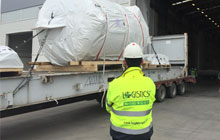
by Marketing | Jun 1, 2018 | News
What is Project Cargo?
 Project cargo, also known as project forwarding or project logistics, is the transportation of large, complex, or high-value pieces of equipment, including break bulk shipments, that can move by land, sea, or air. This process involves single or multiple shipments with the help of cranes, trucks, rail, planes, and ships. Furthermore, project cargo tends to have a specific time-frame or specified delivery date that makes these shipments some of the most complex and detailed projects in the entire logistics industry.
Project cargo, also known as project forwarding or project logistics, is the transportation of large, complex, or high-value pieces of equipment, including break bulk shipments, that can move by land, sea, or air. This process involves single or multiple shipments with the help of cranes, trucks, rail, planes, and ships. Furthermore, project cargo tends to have a specific time-frame or specified delivery date that makes these shipments some of the most complex and detailed projects in the entire logistics industry.
Getting Started:
Pre-planning is crucial
Every successful cargo project begins with an organized and detailed plan. Making adequate time to organize and plan every detail of this process can save shippers a significant amount of time and money, while also reducing the risk of unexpected events.
Work on a contingency plan
There is always a chance that unpredictable or unanticipated events can impact the pre-planned strategy. It’s important to consider every alternative and have a backup plan if something goes wrong. Making sure you have an appropriate contingency plan in place can help ensure success with all deliveries.
Execution
Once all plans are in place, it’s time to begin transporting the product. Every country has different protocols when it comes to customs compliance, paper work, duties, exemptions, authorizations, and other considerations that must be followed. Typically, an experienced project cargo manager can assist firms with all the regulatory considerations and budgeting process, as well as providing insights into the shipment design, packaging, routing options, and appropriate choices for final delivery. The execution of project cargo transportation should be just as comprehensive as the pre-planning stage. Based on transit times and other factors, a project cargo manager will meticulously execute the detailed plans while maintaining liability, constant communication, and overall transparency.
Work on constant improvement
Project cargo transportation always has room for improvement. Tracking and analyzing the results of finished projects will lead to further improvements on future shipments.
Why choose Logistics Plus for project cargo and break bulk shipments?
1) We have over 20 years of project cargo expertise
2) Award-winning service and market competitive rates
3) Our global network of people, locations, and resources
4) Cargo visibility and responsiveness to potential problems
5) World-class technology and transportation management tools
If you’re interested in our award-winning service, click below to receive a free project cargo quote today or email us at projectcargo@logisticsplus.com.


by Marketing | Apr 11, 2018 | News
 Through its partnership with Erie Times-News and GoErie.com, Logistics Plus is being featured, once again, in the current issue of the publisher’s Lake Erie Lifestyles magazine. This new segment discusses the career opportunities Logistic Plus offers local college students through its ongoing internship program. A reprint of the feature, which is shown below, is also available online at www.goerie.com/lifestyle/lake-erie-lifestyle.
Through its partnership with Erie Times-News and GoErie.com, Logistics Plus is being featured, once again, in the current issue of the publisher’s Lake Erie Lifestyles magazine. This new segment discusses the career opportunities Logistic Plus offers local college students through its ongoing internship program. A reprint of the feature, which is shown below, is also available online at www.goerie.com/lifestyle/lake-erie-lifestyle.
You can click the image below to see the larger, online version.


by Marketing | Apr 10, 2018 | News

The primary goal of technology innovation is to make tasks less costly and more efficient. This is particularly the case in the logistics field, where capacity is short, labor is scarce, and customer demands more stringent than ever before. There have already been huge improvements made in the logistics industry and things will only progress as modernization continues to evolve. Here is a quick look at 6 technology trends for 2018 and beyond, the roles they play in logistics, and how they may shape the future.
Trends for 2018 and Beyond
1. Robotics & Automation
Forklifts have been a vital component to warehouses for decades, and we’re now seeing a shift toward programming this share of the supply chain. The primary goal is improved efficiency. Amazon is a leading example in this space, thanks to its acquisition of Kiva Systems, now known as Amazon Robotics. As Amazon and other companies have shown, implementing robotics and autonomous machinery into the fold can condense delivery times to just a 24 to 48-hour period. Autonomous forklifts and robots can pick products much sooner than humans, which means companies don’t have to pay human forklift operators. The combination of lower costs and a speedier assembly is a dream come true for any business owner.
2. Safety and Cybersecurity
Safety and logistics will also be on the radar in 2018. Recent hacks into national companies have exposed potential cybersecurity threats throughout some of the most protected organizations on the globe. As a result, logistics providers will be concentrating more on safety. Amplified demand for faster turnaround will also have an inevitable result of increasing the risk of accidents in transportation operations. Workers are going to be functioning quicker, and doing things faster tends to result in less-than-safe practice. National governing agencies also recognize that logistics companies will be doing overtime in 2018, so it is more likely that they will pass protocols sooner rather than later. This will require the use of more innovative analytics to monitor employee performance and obey safety standards.
3. Mobile Apps
The growth of new technologies and the Internet of Things (IoT) will promote logistics service providers and shippers to increase adoption of mobile apps. These types of apps exist for inventory management, barcode scanning, fleet management, shipment tracking, order management, customer service and more. Logistics businesses can pull information and capabilities via an app to manage capacity and satisfy demand. Freight sharing apps are one of the prime app groupings that will see a significant boost throughout 2018.
4. Transportation Management Systems
The adoption and implementation of transportation management systems (TMS) is anticipated to climb in 2018 and beyond. A TMS has the value of being a “hub” for all logistics communications and processes, including route scheduling and optimization, freight auditing and payment processing, carrier management and more. Furthermore, TMS applications have shifted from terminal-based installs to cloud-based platforms, reducing postponements in implementation, removing bottlenecks from downtime and refining cybersecurity simultaneously. As a result, more companies will adopt such solutions throughout the year to keep up with growing demand and to integrate into the amplified use of the other logistics technology trends.
5. Artificial Intelligence
The potential to utilize Artificial Intelligence (AI) to improve decision-making, transform business models and networks, and modify the customer experience will drive the payoff for digital enterprises. A recent industry survey indicated that 59% of establishments are still assembling data to shape their AI tactics, while the rest have already made advancements in directing or implementing AI solutions. While using artificial intelligence appropriately will result in a great digital business reward, the promise of general AI to perform any intellectual duty that a human can do, and vigorously absorb and comprehend as much as humans, is uncertain.
6. Blockchain Technology
Blockchain is a public, dispersed, and decentralized archive that eliminates business friction by being autonomous of individual applications or contributors. The technology has the promise to transform industries, including the government, healthcare, content dispersal, supply chain and more. An applied approach to blockchain requires a clear understanding of the business opportunity, the draw backs, a dependable architecture, and a solid implementation strategy. BiTA (Blockchain in Transport Technology) is an organization that is leading the charge to help develop and set standards for blockchain technology within the transportation industry.
If you’re looking for world-class technology solutions, look no further than Logistics Plus. Our technology is built on industry-standard platforms with customized portals and unique functionality designed to provide our clients with valuable tools, information, and dashboards. Our team of development, integration and business intelligence (BI) experts integrate best-in-class and custom-built platforms to provide an overall ecosystem that can be seamlessly integrated into global supply chains.


by Marketing | Apr 6, 2018 | News
 Import Tariff and Exemptions
Import Tariff and Exemptions
On March 8, 2018, the President issued proclamations 9704 and 9705 on regulating imports of steel and aluminum into the United States, under Section 232 of the Trade Expansion Act of 1962. The tariff provides for extra import obligations for steel mill and aluminum articles, effective March 23, 2018. US Trade Representative, Robert Lighthizer, announced that certain countries will have temporary tariff exemptions while they negotiate with the United States. The areas included on the list are the European Union, Argentina, Australia, Brazil and South Korea. The president had already granted exemptions to Mexico and Canada when he signed the tariffs earlier last month.
Controversy With the EU
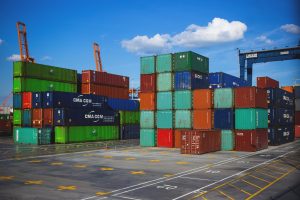 Trump’s tariffs had initiated dispute among European officials, who petitioned hard for an exemption, mentioning the continent’s long-standing military cooperation and close economic ties to the United States. The European Commission had threatened to strike back by forcing trade penalties on a long-list of American goods, worth up to $3.4 billion in annual trade. Though Trump has continually singled out China for unfair trade practices, the European Union appeared to lose more than Beijing from U.S. steel and aluminum tariffs. This is due primarily because the European Union is one of the biggest sources of U.S. steel imports. The 28-nation bloc distributed 5.3 million metric tons of steel to the U.S. in 2017, ranking second to Canada.
Trump’s tariffs had initiated dispute among European officials, who petitioned hard for an exemption, mentioning the continent’s long-standing military cooperation and close economic ties to the United States. The European Commission had threatened to strike back by forcing trade penalties on a long-list of American goods, worth up to $3.4 billion in annual trade. Though Trump has continually singled out China for unfair trade practices, the European Union appeared to lose more than Beijing from U.S. steel and aluminum tariffs. This is due primarily because the European Union is one of the biggest sources of U.S. steel imports. The 28-nation bloc distributed 5.3 million metric tons of steel to the U.S. in 2017, ranking second to Canada.
How Will This Affect Consumers?
American consumers could end up paying more money from President Donald Trump’s oath to enforce tariffs of 25% on imported steel and 10% on imported aluminum. The proposal is anticipated to help U.S. steel and aluminum manufacturers that have long complained about unfair competition from overseas. However, for American consumers it may not be so simple. As a result, U.S. industry influencers say consumers could face higher costs for trucks and automobiles, beer and soft drinks, canned goods and more. At minimum, these tariffs will upset those firms, industries, regions, and states that depend on steel and aluminum imports, which is still a moderately small segment of U.S. trade, as of today. However, if trade partners answer with their own punitive tariffs on a wider set of export industries, exposure to the latest Trump trade shock will spread.
Additional comments from CNBC are here:
https://www.cnbc.com/2018/03/22/trump-to-exempt-eu-from-steel-and-aluminum-tariffs-us-trade-rep.html
A complete list of EU member states is here:
https://ec.europa.eu/taxation_customs/national-customs-websites_en
The request for exclusion of steel imports included under the Section 232 tariffs are here:
https://www.bis.doc.gov/index.php/232-steel
For steel, these are the HTSUS codes included: For the purposes of this proclamation, “steel articles” are defined at the Harmonized Tariff Schedule (HTS) 6 digit level as: 7206.10 through 7216.50, 7216.99 through 7301.10, 7302.10, 7302.40 through 7302.90, and 7304.10 through 7306.90, including any subsequent revisions to these HTS classifications.
The request for exclusion of aluminum imports included under the Section 232 tariffs are here:
https://www.bis.doc.gov/index.php/232-aluminum
For aluminum, these are the HTSUS codes included: For the purposes of this proclamation, “aluminum articles” are defined in the Harmonized Tariff Schedule (HTS) as: (a) unwrought aluminum (HTS 7601); (b) aluminum bars, rods, and profiles (HTS 7604); (c) aluminum wire (HTS 7605); (d) aluminum plate, sheet, strip, and foil (flat rolled products) (HTS 7606 and 7607); (e) aluminum tubes and pipes and tube and pipe fitting (HTS 7608 and 7609); and (f) aluminum castings and forgings (HTS 7616.99.51.60 and 7616.99.51.70), including any subsequent revisions to these HTS classifications.
 Additional Details Regarding China Imports
Additional Details Regarding China Imports
Also, as reported in Wednesday’s International Trade Alert, here is some updated information regarding tariffs on imports from China
The full USTR statement is here:
https://ustr.gov/about-us/policy-offices/press-office/press-releases/2018/april/under-section-301-action-ustr
The list of proposed commodities are on pages 14-58 here, while the comment procedure is on pages 1-2:
https://ustr.gov/sites/default/files/files/Press/Releases/301FRN.pdf
How Can We Help?
We can review your current list of imported commodities to determine if they fall under Section 323 in order for you to accurately determine your landed costing and make better sourcing decisions.

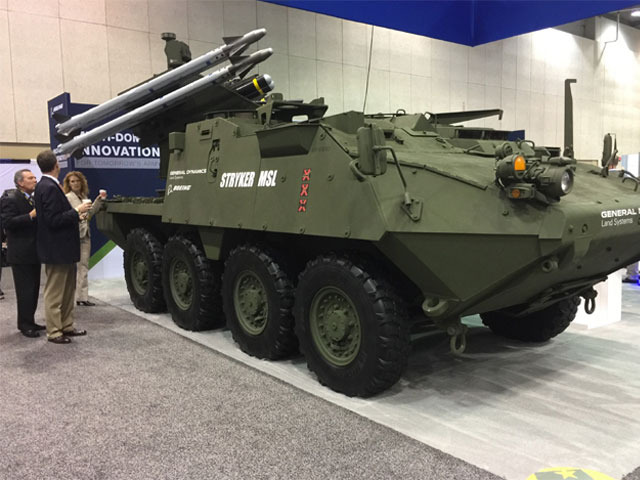
by Marketing | Apr 3, 2018 | News
Blaine Kurtz, director of aerospace and defense for Logistics Plus, recently attended the U.S. Army Global Force Symposium in Huntsville, Alabama. The conference provided an opportunity to explore and showcase ground-breaking ways that Army personnel are filtering the structure, processes, and governance of its modernization enterprise. The theme for this year’s event “Modernizing and Equipping America’s Army for Today and Tomorrow” created an emphasis on discussing challenges facing the Army as it advances its soldiers and equipment to uphold present and future missions. Blaine had many interactions with numerous organizations operating in the aerospace, aviation and defense industries to deepen our understanding of their supply chain needs. There was also a services overview for the U.S. Army Aviation Missile Command (AMCOM). Shown below are some photographs taken at the conference.
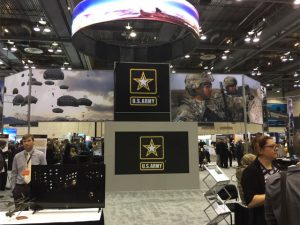
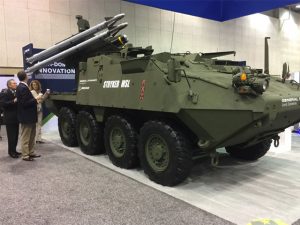
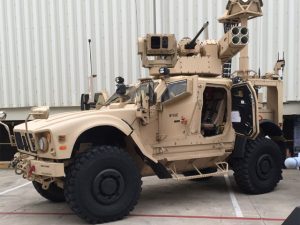

 Project cargo, also known as project forwarding or project logistics, is the transportation of large, complex, or high-value pieces of equipment, including break bulk shipments, that can move by land, sea, or air. This process involves single or multiple shipments with the help of cranes, trucks, rail, planes, and ships. Furthermore, project cargo tends to have a specific time-frame or specified delivery date that makes these shipments some of the most complex and detailed projects in the entire logistics industry.
Project cargo, also known as project forwarding or project logistics, is the transportation of large, complex, or high-value pieces of equipment, including break bulk shipments, that can move by land, sea, or air. This process involves single or multiple shipments with the help of cranes, trucks, rail, planes, and ships. Furthermore, project cargo tends to have a specific time-frame or specified delivery date that makes these shipments some of the most complex and detailed projects in the entire logistics industry.







 Import Tariff and Exemptions
Import Tariff and Exemptions Trump’s tariffs had initiated dispute among European officials, who petitioned hard for an exemption, mentioning the continent’s long-standing military cooperation and close economic ties to the United States.
Trump’s tariffs had initiated dispute among European officials, who petitioned hard for an exemption, mentioning the continent’s long-standing military cooperation and close economic ties to the United States.  Additional Details Regarding China Imports
Additional Details Regarding China Imports


